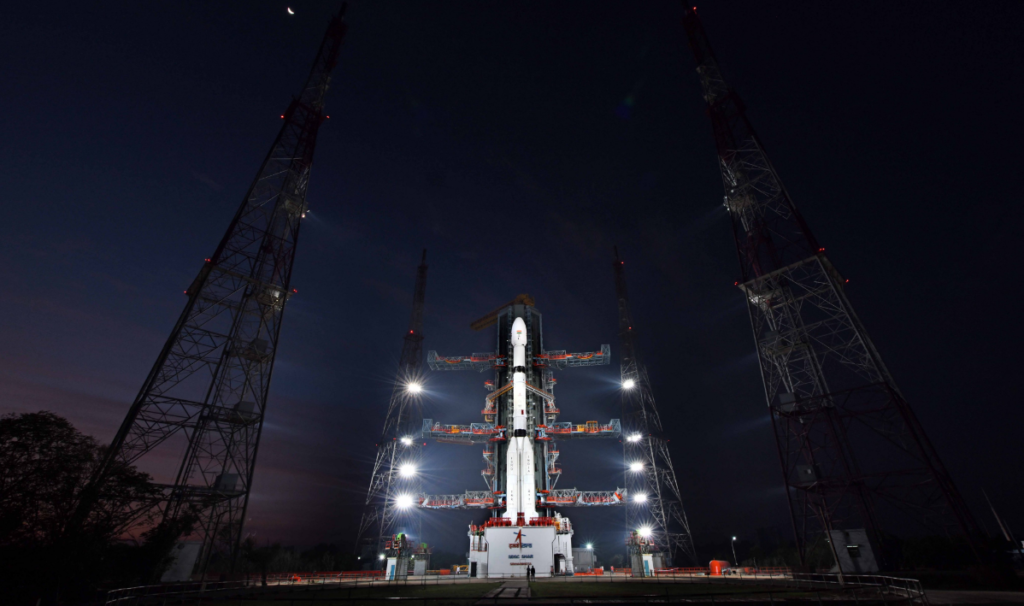ISRO launches the meteorological satellite INSAT-3DS with success. Launching successfully from Sriharikota was ISRO’s INSAT-3DS, which was carried on a the Geosynchronous Launch Vehicle (GSLV rocket).

On Saturday, the Geosynchronous Launch Vehicle (GSLV) rocket carrying the INSAT-3DS meteorological satellite lifted off from Sriharikota, Andhra Pradesh. In addition to praising the team, ISRO Chairman S Somanath verified that the solar panels had been deployed successfully.
The mission’s goal is to keep the services provided by the INSAT-3D and INSAT-3DR satellites in operating as long as possible. Its main objectives include improved meteorological observations, satellite-assisted search and rescue services, and surface monitoring of the land and ocean for weather forecasting and disaster alerts.
The goals of ISRO’s INSAT-3DS mission are:
- Keep an eye on the surface of the Earth, survey the oceans, and examine the surroundings from a variety of crucial meteorological angles.
- Use vertical profiles to provide data on various atmospheric conditions.
- Oversee the gathering and sharing of data via Data Collection Platforms (DCPs).
- Offer assistance to search and rescue teams.
What payloads does ISRO have on board the INSAT-3DS?
- Imager and Sounder: INSAT-3DS has a 6-channel imager and a 19-channel sounder for sophisticated weather monitoring.
- Communication Payloads: The Data Relay Transponder (DRT) is one of the satellite’s essential communication payloads.
- Data Collection: To improve its ability to forecast the weather, the DRT gets data from automatic weather stations and data collection platforms.
- SAS&R Transponder: The SAS&R transponder is essential to the world’s search and rescue operations as it relays distress signals and alarm detections from beacon transmitters.
What Is Space Carrying by Insat-3D?
A multi-spectral Imager (optical radiometer) on board the satellite can take pictures of the Earth and its environs in six different wavelength bands. INSAT-3DS has a powerful 19-channel Sounder payload, consisting of one Visible channel and eighteen narrow spectral channels. The primary purpose of the Sounder payload is to deliver essential data regarding the vertical profiles of the atmosphere, including but not limited to temperature and humidity.
Additionally, the satellite has a Data Relay Transponder (DRT), which is essential for obtaining oceanographic, hydrological, and meteorological data from automated data collection systems and Automatic Weather Stations (AWS) across the globe. After that, the DRT sends this important information back to user terminals, guaranteeing effective worldwide data distribution.
The spacecraft has also been equipped with a satellite-aided search and rescue (SA&SR) transponder, which is intended to relay distress signals and alert detections from beacon transmitters. With its ability to cover the entire world in the UHF band, this capability greatly improves Search and Rescue efforts.
FUTURE ACTIONS OF INSAT-3DS IN SPACE?
The main goals of the satellite are diverse and essential for environmental safety and monitoring. It has the capability to see the surface of the Earth and conduct oceanic observations in several spectral channels, which are essential for analyzing meteorological data.
Advanced payloads on board the 2274-kg INSAT-3DS satellite are intended to deliver more precise and fast data on atmospheric conditions.
By enabling improved readiness for weather-related difficulties, this improvement in meteorological services is anticipated to have a large positive impact on a number of sectors, including disaster management, aviation, and agriculture.
The satellite’s capacity for data collecting and dissemination will be advantageous to Data collecting Platforms (DCPs), expanding the scope and effectiveness of information gathering. In addition, the INSAT-3DS will support emergency response activities by providing Satellite Aided Search and Rescue services.
Since 2001, the spacecraft’s launch vehicle, the GSLV-MkII, has completed 15 missions. With 11 of these missions completed successfully, the heavy-lift vehicle’s 16th mission was the GSLV-F14.
Next mission for ISRO?
The chairman of ISRO affirmed that the NISAR joint mission, which is being carried out in conjunction with NASA, is proceeding according to plan.
NASA and the Indian Space Research Organization (ISRO) are partners in the Earth observation mission known as NISAR. In order to improve its observational capabilities beyond what a single radar might do, the mission makes use of two radars, each of which is tuned to see a wider range of changes.
FAQs…
What is INSAT-3D?
The Indian Space Research Organization (ISRO) owns and operates the meteorological mission Indian National Satellite – 3D (INSAT-3D), which was launched in July 2013. Improved terrestrial and oceanic meteorological observations and monitoring for weather forecasting and hazard alerts is the goal of INSAT-3D.
Why was INSAT-3D launched?
The Third Generation Meteorological Satellite (INSAT-3DS) is a geostationary orbit follow-on mission. It is intended to improve meteorological observations and surface monitoring for weather forecasting and hazard alerts on land and in the ocean.
Who launched Insat 3DR?
In terms of sensors and products, INSAT-3DR is the same as INSAT-3D. The Indian National Satellite System, or INSAT for short, is a constellation of geostationary multifunctional satellites that were launched by ISRO to meet India’s needs in meteorology, broadcasting, telecommunications, and search and rescue.
Is Chandrayaan-3 successful?
India made history by landing on the lunar south pole with the success of Chandrayaan-3. Three decades have passed since India’s successful lunar expedition of that year. At 6:04 p.m. on August 23, the Vikram lander touched down on the moon, sending a beam of excitement over the space control room.
How many GSLV are there in India?
The Indian Space Research Organization is the operator of the Geosynchronous Satellite Launch Vehicle (GSLV) series of expendable launch vehicles. Since 2001, GSLV has been utilized in fifteen launches.
Why was GSLV f14 launched?
The public and last mile users, such farmers and fishermen, would benefit from timely alerts, early warnings, and improved weather and climate predictions in India.
FAQs…
SpaceX launched IM-1 Moon Lander “Odysseus”
PSL 2024: Pakistan Super League Season 9 Schedule, Teams, Live Streaming Details & More
OpenAI’s Sora: New AI model can create videos from text prompts
Suhani Bhatnagar dies at 19 : Dangal actor who played young Babita Phogat
iPhone 16 Pro series will come with Bigger Batteries and up to 2TB of storage